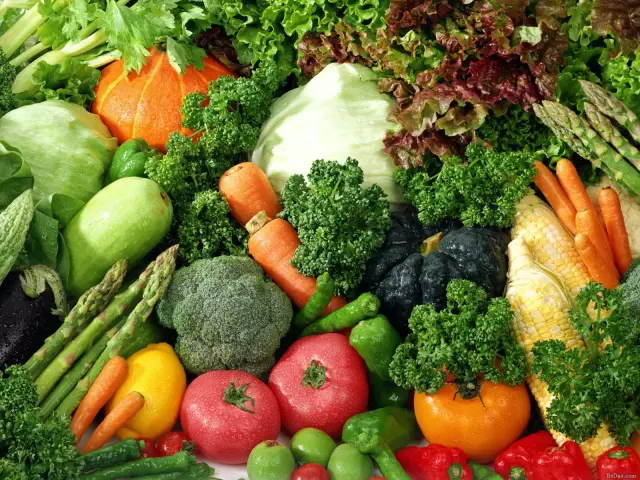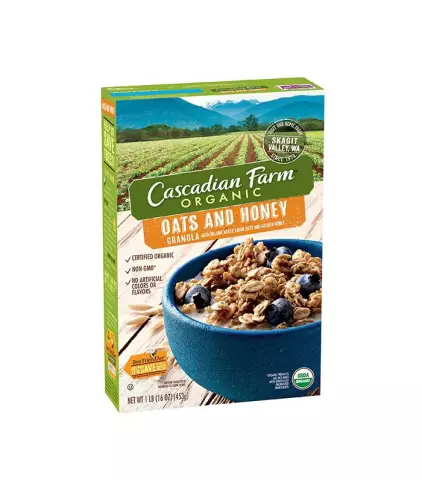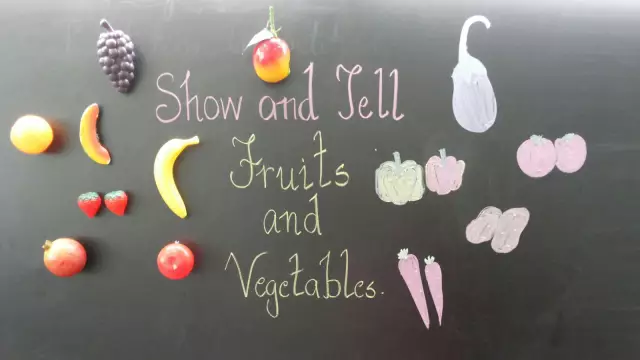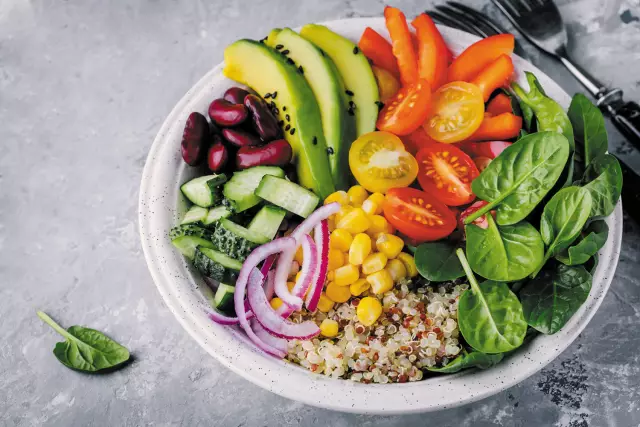- Author Rachel Wainwright [email protected].
- Public 2023-12-15 07:39.
- Last modified 2025-11-02 20:14.
12 unusual but very healthy vegetables
A wide range of fruits and vegetables can be found in modern stores. Everyone is already accustomed to the fact that at any time of the year there are not only seasonal domestic products on the shelves, but also vegetables and fruits grown in countries with different climatic conditions. However, what is sold in stores and markets is only a small part of the edible plants that nature is so rich in. Today we will tell you about rare and very useful vegetables that are gradually becoming available in Russia.
Forbidden rice
One of the types of rice cultivated in China. In the past, it was only allowed to be eaten by aristocrats who belonged to the royal family.
The groats look specific: their color changes from black to dark purple during cooking. The taste of the prepared product is very peculiar and very attractive - there is a pronounced nutty shade.
In terms of the content of vitamins and trace elements (iron, zinc, magnesium and calcium), this variety is much superior to other varieties of rice.

Source: depositphotos.com
Watermelon radish
The root vegetable has a white or greenish skin and bright pink flesh. The sizes are slightly larger than those of the usual varieties of radish: the diameter reaches 7.5 cm. The taste is moderately sharp, pleasantly bitter.
Watermelon radish is rich in copper, magnesium, potassium, calcium, ascorbic and folic acid. In salads, it goes well with fresh cucumbers and a variety of herbs.

Source: depositphotos.com
Vib pumpkin
Sweet, small (about the size of a medium orange), bright orange pumpkins, which are high in beta-carotene, magnesium, calcium, phosphorus and potassium. Indispensable in dietary nutrition.

Source: depositphotos.com
"Chocolate" pepper
An exotic modification of sweet (bell peppers). Its ripe fruits have a chocolate-colored skin and pulp, contain a whole range of vitamins and are distinguished by a high concentration of sugars. Due to its high yield, the plant is popular in the United States.

Source: depositphotos.com
White "egg" eggplant
A rare variety of eggplant grown in Japan. The fruit is ovoid and white in color. They are great for cooking vegetable stews and keep well frozen.
Eggplant pulp practically does not have a bitter taste and has a delicate texture.

Source: depositphotos.com
Lilac cauliflower
A variety of cauliflower bred by Italian breeders. Like the white-fruited varieties that are more familiar to us, it contains many vitamins, trace elements and fiber necessary for normal digestion. It is an important component of dietary cuisine.
The lilac color of the edible flowers is due to the presence of anthocyanins, which are extremely beneficial for maintaining the health of the heart and blood vessels.

Source: depositphotos.com
Zucchini "Gold Rush"
A very productive variety with denser flesh and fewer seeds than other courgettes. It is hardly damaged by insects and can be cultivated without the use of chemical protection agents.
The skin of the fruit has a yellow-orange color, and the pulp has a delicate taste, which allows you to eat zucchini raw, with all the useful properties preserved.

Source: depositphotos.com
White beet
The root vegetable contains the same set of vitamins as the usual red varieties. The flesh and skin of this species are white, and the taste is sweet, but does not have a specific shade, because of which many do not like red beets.
The product is used both raw and boiled or baked. It regulates digestion processes well; the pulp is rich in potassium, phosphorus, manganese, iron and magnesium.

Source: depositphotos.com
Hopi corn
The grains of this variety are dark blue. They are no less useful than the grains of white and yellow corn, but the taste is softer, sweeter, with a nutty flavor.

Source: depositphotos.com
Purple potatoes
Recently this variety is gaining more and more popularity. Its peculiarity is a high content of anthocyanins, which color the tubers in a rich purple color and are powerful antioxidants. The exotic color is preserved when heat treated.
Regular consumption of such potatoes helps to slow down the aging process, increase immunity and reduce the likelihood of developing malignant neoplasms.

Source: depositphotos.com
Melotria
Plant of the pumpkin family. It is a liana, which, despite its tropical origin, can be grown in mid-latitudes. Being a luxurious option for vertical gardening, melotria can please the gardener with fruits similar to miniature watermelons and edible tubers.
Melotria fruit tastes like cucumbers. They are rich in healthy fiber, trace elements and vitamins and are attractive for people seeking to lose weight: the energy value is only 14 kcal per 100 g. Fruits are used raw (in salads), as well as salted and pickled. The inclusion of melotria in the diet helps to cleanse the liver, reduce the concentration of "harmful" cholesterol, and improve the condition of the walls of blood vessels.
The tubers of the plant are also very useful. Raw they taste like a cross between sweet radish and cucumber.

Source: depositphotos.com
Momordica
Another plant belonging to the pumpkin family, which is becoming more and more popular among Russian gardeners. This is a powerful vine on which fruits that look like elongated melons ripen. Momordica pulp is delicious and nutritious. It contains proteins, sugars, fiber and a wide range of vitamins. It is eaten fried, stewed and boiled, as well as mixed with other vegetables.
But that's not all. In the thickness of each fruit are fragrant and sweet berries - seeds enclosed in a fleshy bright red shell. Dried seeds are also edible: they are ground into a powder that tastes like hazelnuts.
Momordica is widely used in the cooking and medicine of the peoples of India. It is believed that its inclusion in the diet helps to activate the production of insulin, lower blood sugar, heal cardiovascular and gastrointestinal ailments, and slow down aging. The healing properties of Momordica are also recognized by official medicine.

Source: depositphotos.com
The planting material of the described plants is gradually appearing in Russian stores. There are difficulties with growing some of them, but for a person seeking to enrich his menu and the diet of his family with healthy and tasty products, nothing is impossible. And the townspeople should not consider themselves left out: many edible plant novelties are already found on store shelves.
Eating exotic fruits requires caution. People prone to allergies should be especially careful. You should not offer such products to young children, the elderly and patients with severe chronic ailments. In any case, unfamiliar food should be introduced into the diet gradually, in small portions, monitoring the body's response.
YouTube video related to the article:

Maria Kulkes Medical journalist About the author
Education: First Moscow State Medical University named after I. M. Sechenov, specialty "General Medicine".
Found a mistake in the text? Select it and press Ctrl + Enter.






